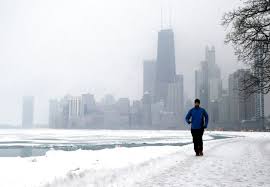Understanding Chicago Weather: Current Conditions and Future Trends

The Importance of Chicago Weather
Chicago weather holds significant importance for residents, commuters, and visitors alike. The Windy City experiences diverse weather patterns that can fluctuate rapidly due to its unique geographical location near the Great Lakes. Understanding the current conditions and forecasts is essential for planning outdoor activities, travel, and keeping safe during extreme weather events.
Current Weather Conditions
As of October 2023, Chicago is experiencing typical fall weather, characterized by cool temperatures and increasing chances of precipitation. The average temperature ranges from 50°F to 65°F (10°C to 18°C) during this time. Over the past week, the city saw a mix of sunny days and overcast skies, with light showers reported intermittently. Local meteorologists emphasize the importance of staying informed, as thunderstorms can develop quickly in the late afternoons, especially towards the end of October. The National Weather Service has issued alerts for significant rainfall expected over the coming week, which could impact travel and outdoor events.
Seasonal Trends and Patterns
Chicago’s weather is distinguished by its four distinct seasons, which affect daily life and planning throughout the year. Winters can be particularly harsh, with temperatures plunging below freezing and significant snowfall. Conversely, summer brings hot and humid conditions, with temperatures often exceeding 90°F (32°C). The transition months of spring and fall are known for their volatility, with rapid temperature shifts and varying precipitation levels. Climate patterns are also changing, with statistics indicating that extreme weather events are becoming more frequent. This year, residents have witnessed a noticeable uptick in severe weather incidents compared to previous years, prompting discussions about climate resilience and preparedness.
Preparing for the Future
For both locals and newcomers, staying ahead of Chicago weather patterns is crucial. The city’s emergency management agencies stress the need for preparedness, especially in light of potential flooding and winter storms. Authorities recommend that residents keep emergency kits ready, stay informed through weather apps and alerts, and avoid unnecessary travel during severe weather warnings. Additionally, with advancements in meteorological technologies, forecasts are becoming more accurate, allowing citizens to plan better.
Conclusion
Understanding Chicago weather is crucial for navigating life in the city. With current conditions indicating a shift towards more frequent storms and changing climate patterns, residents must stay vigilant and prepared. As forecasters continue to analyze the effects of climate change on weather in the Midwest, keeping informed and proactive will help ensure safety and enhance the quality of life in Chicago.









